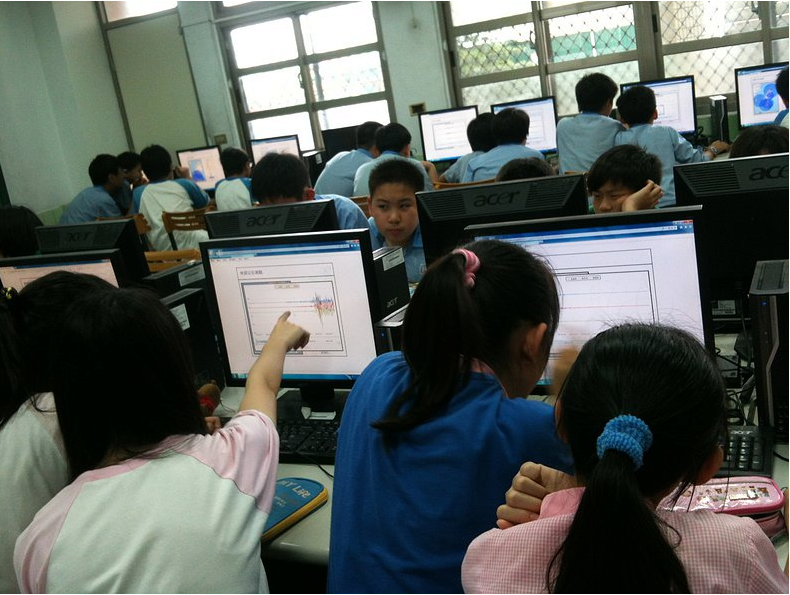“Earthquake School in the Cloud: Citizen seismologists in Taiwan.” Accessed December 07, 2014. http://.wix.com/earthquake-school.
“Taiwan dizhen xueyuan (台灣地震學園).” Accessed December 07, 2014. http://katepili2003.wix.com/future-eq-school.
 This Taiwan-based website is a resource platform that provides games and stories to educate citizens about seismology, disaster response, and data quantification. Its target audience is elementary and junior-high students, but is also open to general users. It is run by a team of seismologists, computer scientists, and science education scholars. The site provides pedagogical materials to users that are available for free download on request. There are a variety of games that allow the players to understand how earthquakes are located, measured, and the associated processes in their making. The project’s founder, Kate Huihsuan Chen, an associate professor at the National Taiwan Normal University’s Department of Earth Sciences, calls it the “Earthquake School in the Cloud,” pointing to the instant accessibility of its material that can be digitally shared and built by users. The units on offer are also collaboratively conceptualized and made in the spirit of “citizen science” – projects which crowd-source data through facilitating awareness of science and training citizens in how to report back particular data.
This Taiwan-based website is a resource platform that provides games and stories to educate citizens about seismology, disaster response, and data quantification. Its target audience is elementary and junior-high students, but is also open to general users. It is run by a team of seismologists, computer scientists, and science education scholars. The site provides pedagogical materials to users that are available for free download on request. There are a variety of games that allow the players to understand how earthquakes are located, measured, and the associated processes in their making. The project’s founder, Kate Huihsuan Chen, an associate professor at the National Taiwan Normal University’s Department of Earth Sciences, calls it the “Earthquake School in the Cloud,” pointing to the instant accessibility of its material that can be digitally shared and built by users. The units on offer are also collaboratively conceptualized and made in the spirit of “citizen science” – projects which crowd-source data through facilitating awareness of science and training citizens in how to report back particular data.
With regard to educating citizens, games and narrative-based teaching modules help turn the difficult and abstract-sounding field of seismology into something more approachable and digestible for learners of all ages. Although only Chinese (Traditional)-enabled users, at the time of this writing, will be able to use the material on offer, English versions of the games and teaching modules are scheduled to be released in 2015. The material aims to equip learners with the skills to read seismic waveform data of previous earthquakes and also to use it to suggest actions that should be taken. The games and modules also provide a paired quantitative and qualitative approach to seismology that recognizes how the merits of different kinds of information may be brought together to understand earthquakes. The data they incorporate is mainly from Taiwan (where the project is based), but there is also, a unit on the 2004 Sumatra quake and tsunami.
The project sources data about current quakes from users who can play games competitively and in near real-time to produce their own report on earthquakes that uses various kinds of data (e.g. magnitude, shaking intensity). By installing a USB sensor device on PCs in schools and homes, earthquake shaking data can be collected and transferred to a central system that processes it.1 This citizen science project thus strives to accomplish two things in tandem. “Earthquake School in a Cloud” works to raise understanding of what earthquakes are as natural phenomena, how their effects on human communities are measured, and how the damage they cause can be mitigated. This pedagogical work facilitates a practical push to stimulate the adoption of preventive measures and early warning systems. At present there is no unit on the Tōhoku earthquake and tsunami, but the comparative perspective on disasters may be useful and stimulating for educators based in other contexts to consider in their teaching.
Shi-Lin Loh, Harvard University
1. [ Taiwan Cloud-based Earthquake Science Learning Platform, “QCN Taiwan,” accessed December 07, 2014, http://qcntw.earth.sinica.edu.tw/index.php/qcn-tw. ]↩
![[Teach311 + COVID-19] Collective](https://blogs.ntu.edu.sg/teach311/files/2020/04/Banner.jpg)